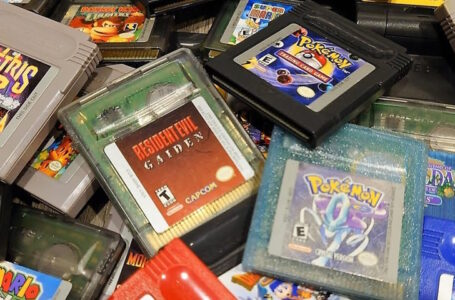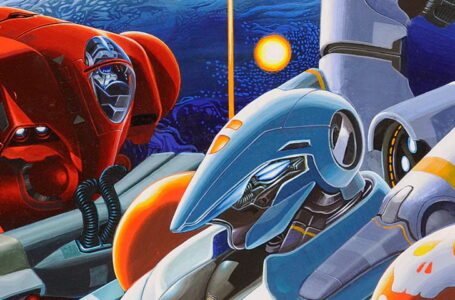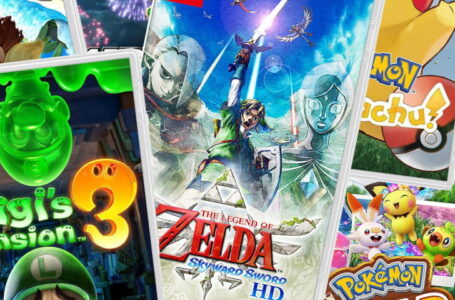Here’s something you don’t see every day: Japanese Commodore 64 games
Before home computers became standardised into the Windows, Mac OS and Linux boxes we’re all familiar today, there were myriad different varieties of home computer out there, none of which were completely compatible with one another. During the 8-bit micro era here in the UK, we favoured the ZX Spectrum, Commodore 64, Amstrad and Atari home computers, while in Japan computer enthusiasts were using systems like the NEC PC-88, Fujitsu FM-7 and Sharp X1.
As a result, a lot of early Japanese home computer games are confined to these machines that are not at all well-known in the west, while Japan didn’t come into contact with a lot of the most popular and influential games developed in Europe and the United States during this defining period for the video game industry.
We can’t turn back the clock and change that situation — but there’s nothing stopping modern developers from experimenting with a variety of systems that they wouldn’t have had easy access to back in the ’80s. The wealth of highly accurate emulators for every system under the sun (except the notoriously difficult to emulate Atari Jaguar) means that it’s easy to enjoy experiences similar to that which home computer enthusiasts from around the world would have had 40 years ago.
One Japanese programmer, known as Inufuto, has taken this to something of an extreme, by taking a variety of games they made for the popular (in Japan) MSX platform and then porting them to a lot of different platforms. And I mean a lot. Here’s their development flowchart, showing the MSX as the starting point, and then all the various jumping-off points for converting the games to often radically different system architecture and processors:
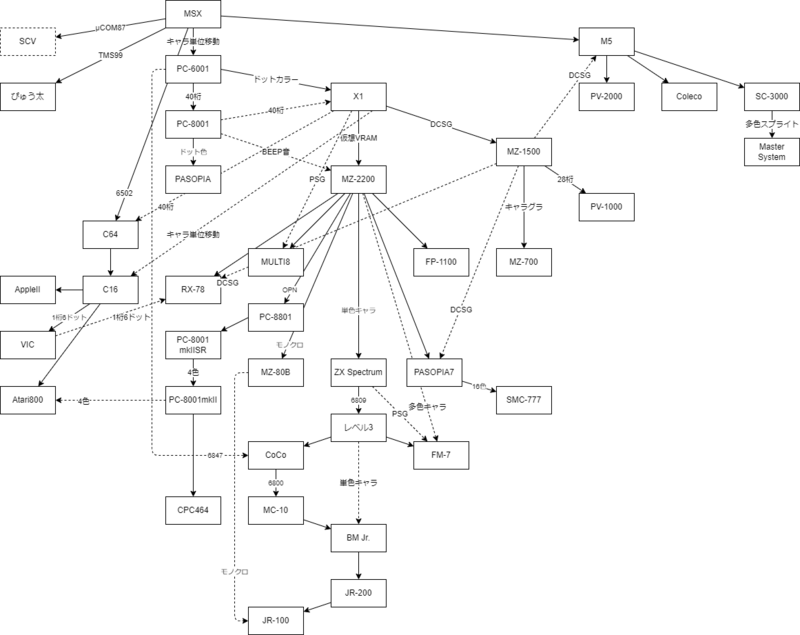
The different “routes” on the flowchart reflect different processors and graphics layouts. Both of these represent significant porting challenges, because different processors likely require a complete rewriting of the code, while different graphics layouts mean that visuals will need to be redesigned to fit in with the machine’s available resolutions.
What’s interesting about Inufuto’s efforts here is that they haven’t restricted themselves to just systems that were popular in Japan. No — they’ve gone the whole hog and also incorporated a range of computer models that were popular in the west, including the Commodore 64, Commodore 16, Apple II, VIC-20, Atari 8-bit and Amstrad CPC464.
I highlight the Commodore 64 specifically for two reasons: firstly, Inufuto’s efforts here represent some of the first genuine Japanese Commodore 64 games to make it to the public; and secondly, the Commodore 64 is only a single “step” away from the MSX source material, theoretically meaning that the ports to it should be some of the closest recreations of the original titles.
So, well, what else is there to do than give them all a quick go, then?
Aerial
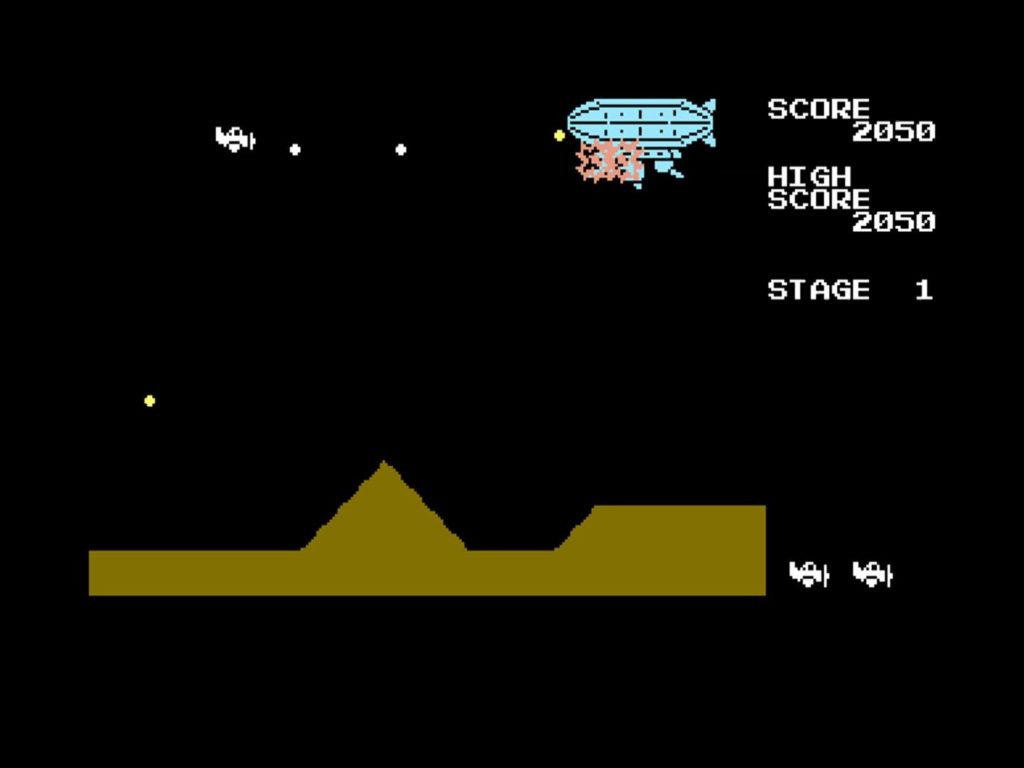
We kick off with what is probably the weakest of Inufuto’s efforts on the Commodore 64. Aerial is a simple horizontally scrolling shooter with a passing resemblance to Namco’s Sky Kid — in fact, all of Inufuto’s games look and feel like early Namco games, which is probably deliberate — but it’s just not very interesting.
It takes several stages before the attack patterns become the slightest bit challenging, and by that point the game slows to a crawl, with flickery sprites and juddery scrolling. It’s fair to say that the humble Commodore 64 is capable of much better than this, and that this port fails to take advantage of the system’s particular strengths such as hardware sprites and scrolling.
Jaunty music, though.
Download Aerial for every platform under the sun here.
Ascend
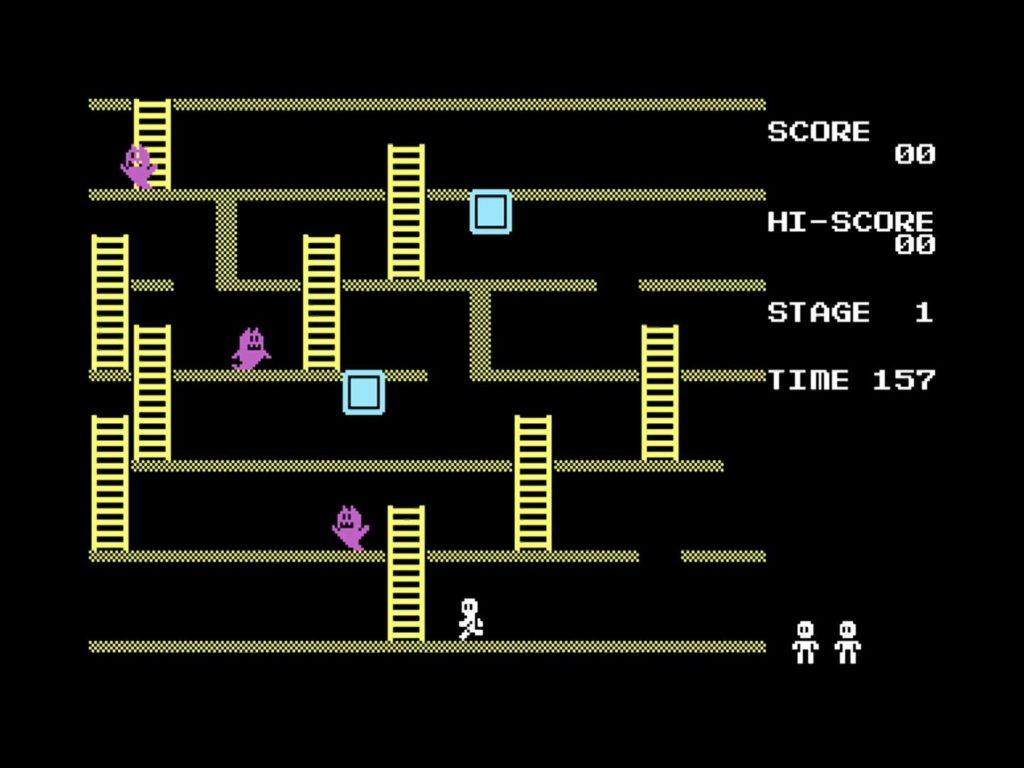
This is more like it. A simple, straightforward platforms-and-ladders game with smooth scrolling (a strength of the Commodore 64) and interesting mechanics. Your aim in this one, as the name suggests, is simply to ascend the level to the top while avoiding the enemies. The purple ghosts can be blocked off by headbutting the cyan blocks from underneath, while orange fireball-type enemies can be jumped over.
My main criticism of this one would be that the jumping animation doesn’t look like it should protect you from the fireballs, since your little dude doesn’t bounce high enough up into the air to completely pass over the top of the enemy sprites — but it seems that mechanically speaking, so long as he is “mid-jump” when he collides with a fireball enemy, he’ll be safe.
Grab Ascend for a variety of classic computers here.
Battlot
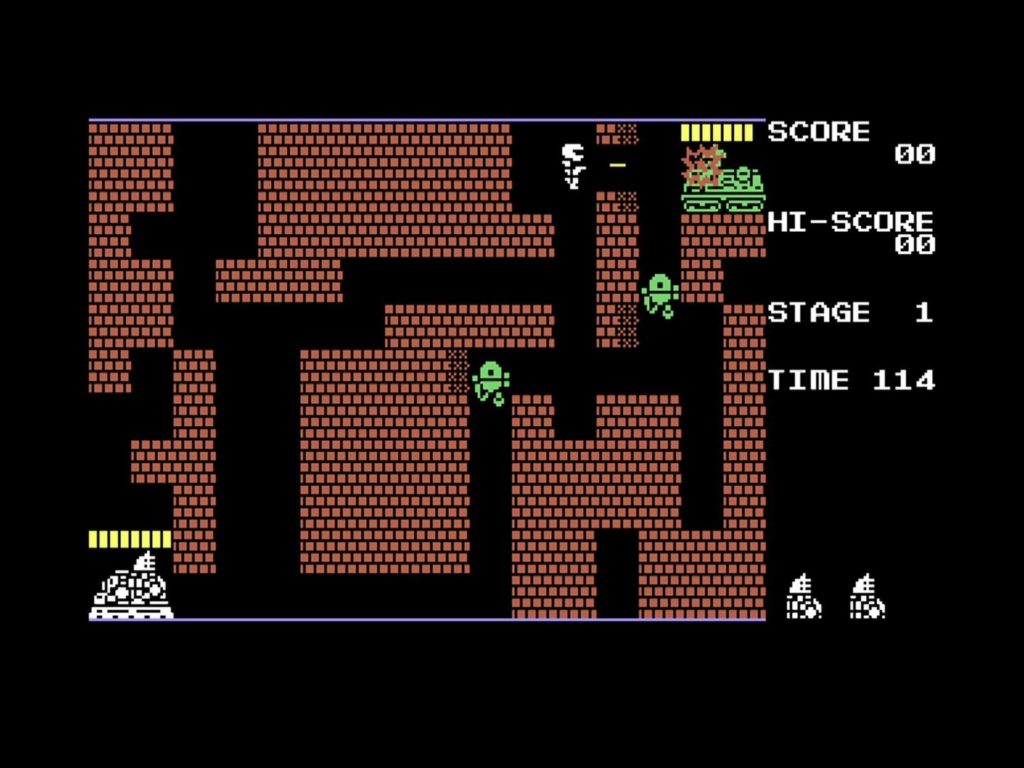
Another game that feels heavily inspired by a Namco game — in this case, Battle City — Battlot is an action-strategy shooter in which your aim is to destroy the enemy base while ensuring that the enemy robots don’t do the same to your base.
It’s a very simple game in execution — you simply move and shoot in four directions and are able to blast through the brick walls — but surprisingly enjoyable. A few more levels wouldn’t have gone amiss, since the game starts “looping” after a certain point, but the gradual escalation in difficulty from your opponents feels like it happens at a nice pace. The graphics don’t exactly push the Commodore 64, but that’s what you get for being spectacularly multi-format.
Battlot can be yours for the retro system of your choice here.
Bootskell
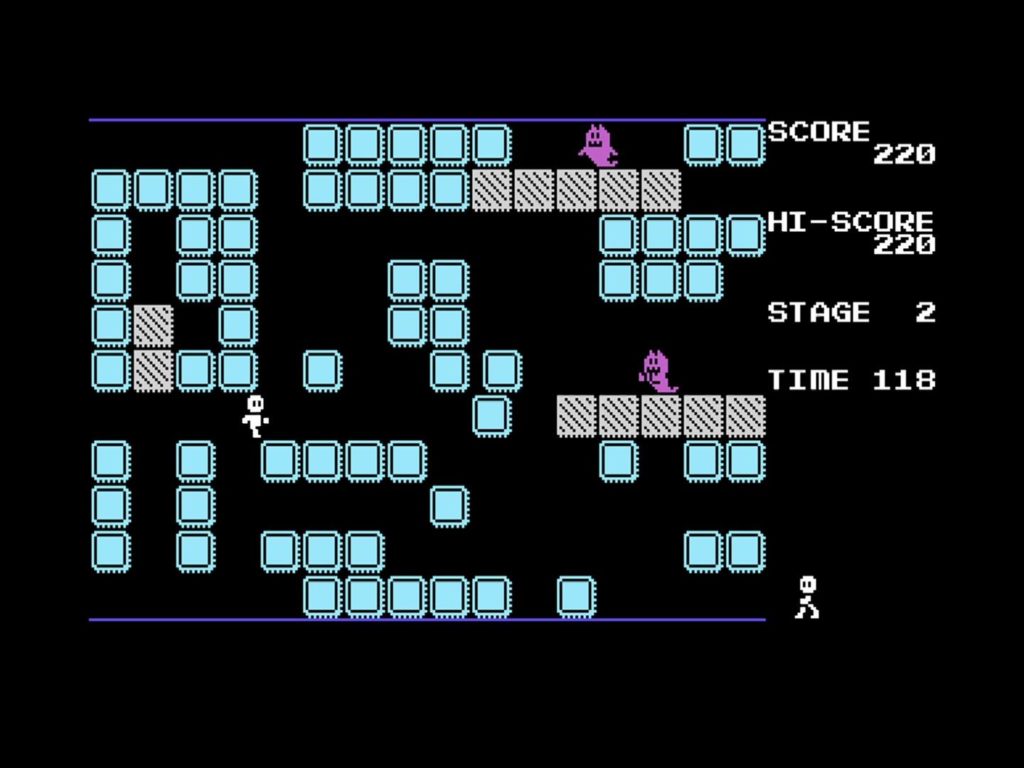
This one’s an unabashed ripoff of Sega’s Pengo, with the interesting twist that the enemy characters are also capable of breaking and pushing blocks around. Simply shove the blocks across the playfield to squish the enemy characters and proceed to the next stage.
You’ve probably noticed by this point that Inufuto’s games all have a very consistent look and feel to them thanks to the way in which they all use the same font and graphics. This makes them work well as a “collection”, and gives them a feeling that they’re intended to be enjoyed together. Again, those visuals might not exactly be the best the Commodore 64 has to offer — but they certainly have a distinct sense of style about them.
Bootskell is waiting for you to choose a platform here.
Cavit
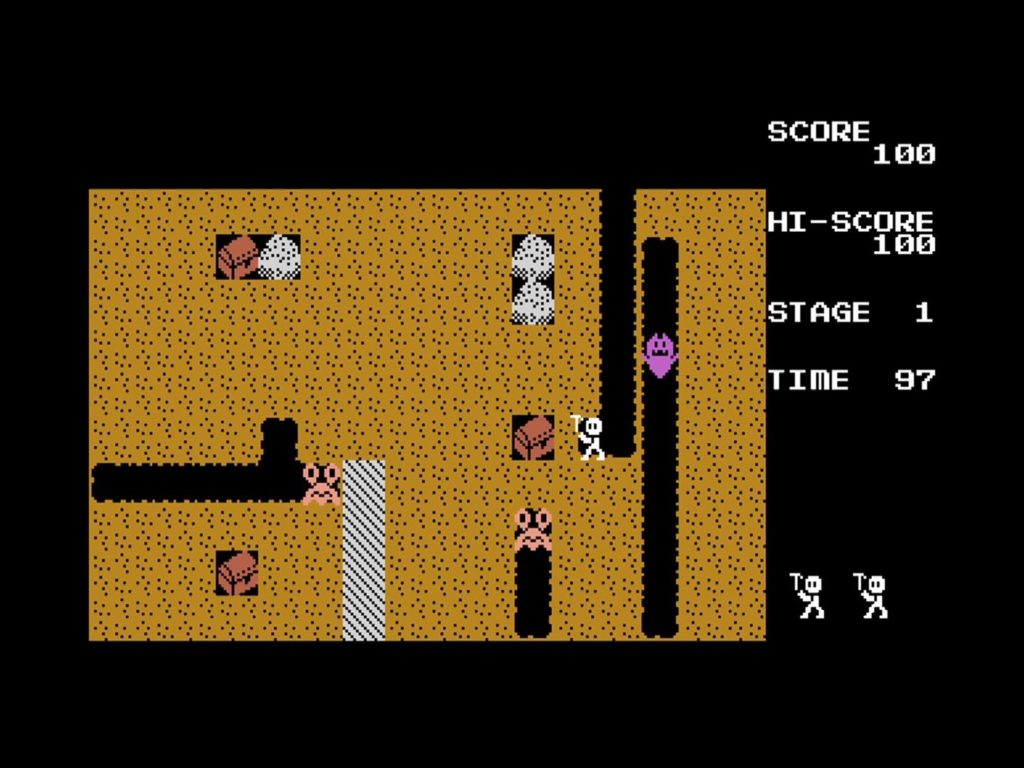
This might look like Dig-Dug (yes, another Namco game!) at first glance, but it’s actually a little different in execution; rather than defeating all the enemies on screen, your quest is instead to gather all the buried treasure chests.
Dealing with the enemies by dropping rocks on their heads is optional but rewarding, and the simple AI patterns they operate on means that setting up satisfying combos is a snap.
Cavit is available for pretty much any classic 8-bit computer you’d care to mention here.
Impetus
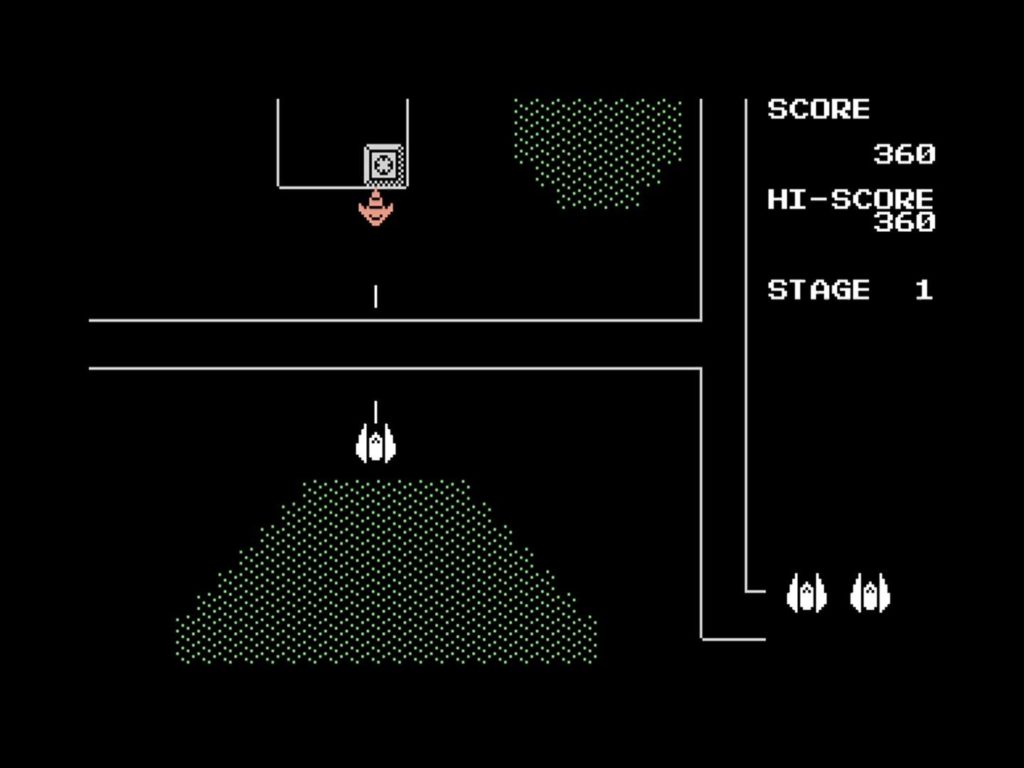
Another slightly weaker link in Inufuto’s library of Commodore 64 games, Impetus is a vertically scrolling shoot ’em up where you blast aerial and ground targets with your spaceship. Like Aerial, this suffers a bit from both jerky movement and a lack of excitement, particularly in its early stages.
The rather abstract backgrounds, while once again not exactly the best the Commodore 64 has to offer, have a distinctive sense of style to them and give the game a strong feeling of identity — it’s just a shame this one isn’t more fun to play.
Impetus is available for your preferred ancient home computer here.
Lift
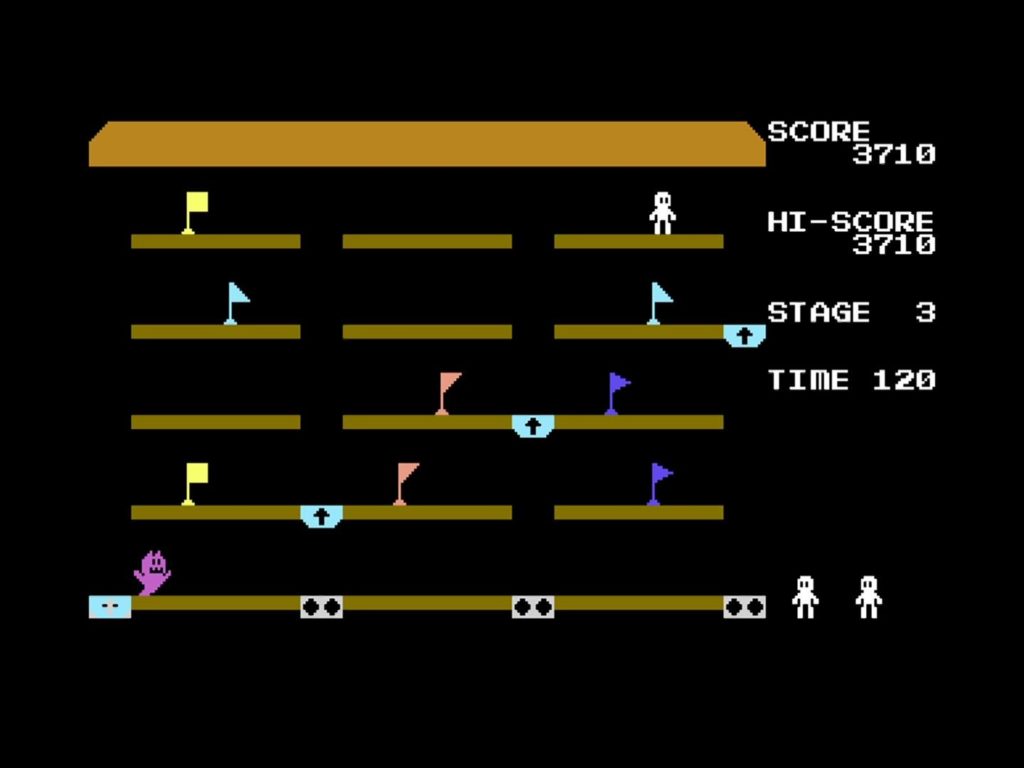
Lift is probably my favourite of Inufuto’s games that I played on the Commodore 64. It’s a single-screen platformer where you can’t jump; instead, moving between levels requires you to use the titular lifts or drop down gaps. Your aim is to collect the flags, and collecting two matching-coloured flags in a row nets you some bonus points that increase the more “pairs” you nab in succession.
This is another game that has a strong early Namco feel to it. Specifically, it feels like an odd blend of Mappy (for the platforming) and Rally-X (for the “collecting flags in order” element) — and it’s really fun. Again, hardly the most technically impressive game you’ll ever see on the Commodore 64, but when it’s this enjoyable, who cares?
Lift is up for grabs on many different home computer platforms here.
Mazy
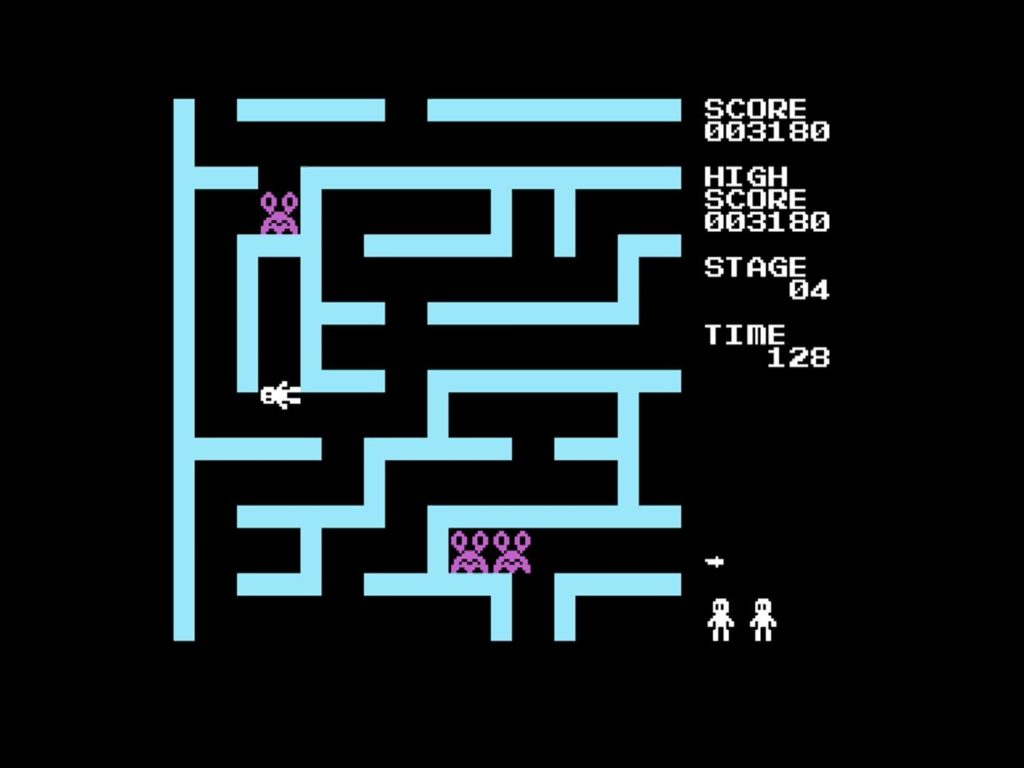
Another simple but effective formula that works well, Mazy is, as the name suggests, a maze game. All you need to do in this one is explore the maze until you find the flashing exit tile, but along the way there are nasties attempting to do you harm. You can find knives to chuck at them, though, so enjoy the satisfaction of landing a sharp thing right between a baddy’s eyes and the delicious point rewards!
Again, Mazy isn’t a great demonstration of the Commodore 64’s capabilities — the character-based scrolling is especially jerky in this one — but it’s testament to the solid gameplay in most of Inufuto’s games that you just stop noticing the technical aspects after a while.
Mazy is ready for you on a range of systems here.
Neuras
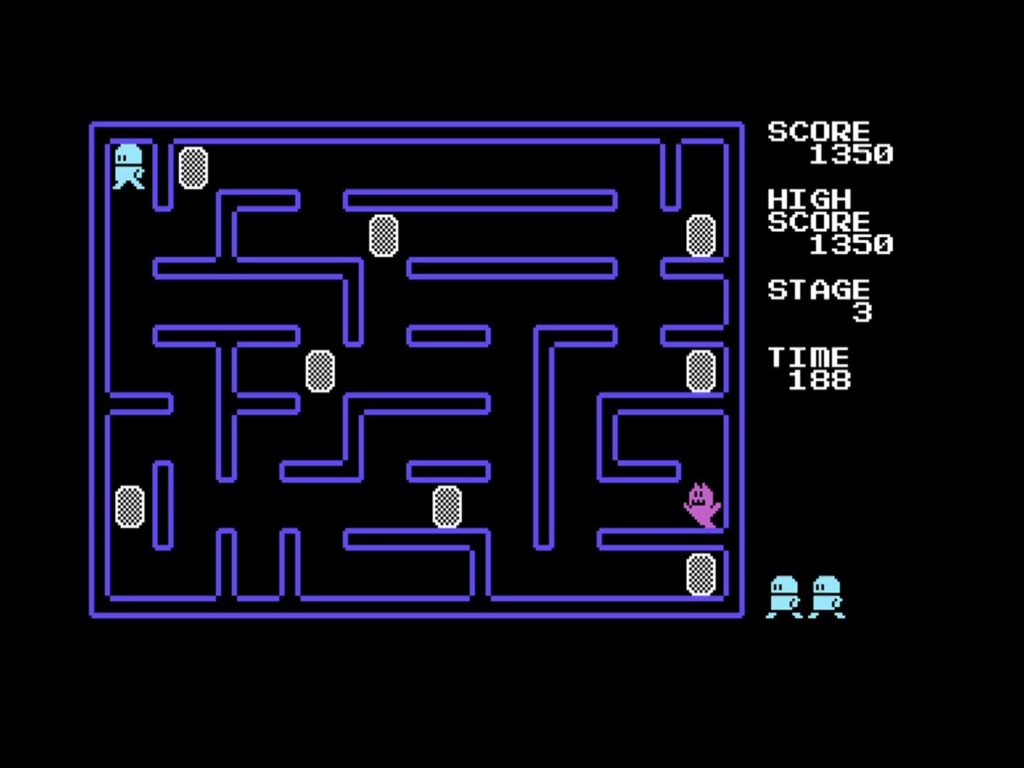
This is another one of Inufuto’s Commodore 64 games that I really like, because it’s not a straight clone of anything — instead, it’s a fascinating blend of maze game and Concentration. Your aim in this one is to grab a card with a letter on it and then throw said card at a matching card with the same letter on it. Naturally, there are enemies attempting to stop you from your extremely important mission.
It’s a really nice puzzly twist on the maze chase formula, and it works very well. Once again, this has the distinct feel of classic Japanese home computer games — and a touch of classic Japanese arcade games, too. Definitely worth a pop.
Neuras is available now for a variety of 8-bit home computers here.
Ruptus
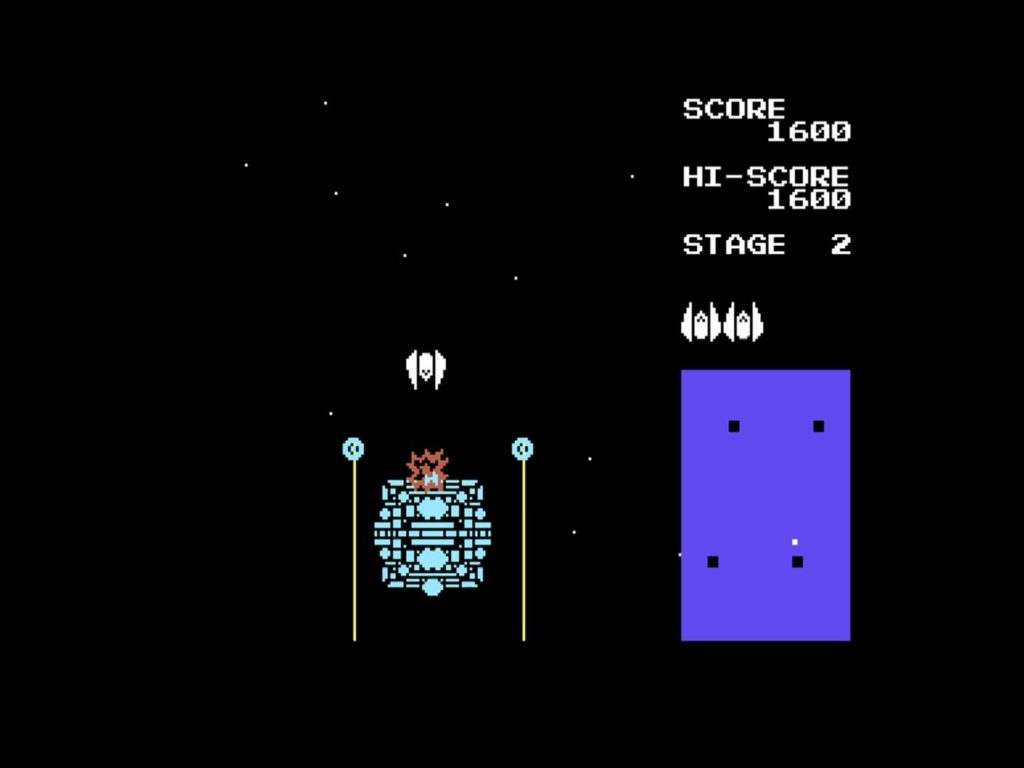
Finally, we have Ruptus, which is Inufuto’s take on Namco’s Bosconian. It’s a reasonable enough adaptation, but like Inufuto’s other shoot ’em up titles we’ve seen today, it’s not one of their stronger works.
Jerky movement, a general lack of intensity and an under-use of the Commodore 64’s capabilities make this less enjoyable than many of the other titles we’ve seen today — it’s not bad, by any means, but it lacks a certain degree of excitement present in the others.
Ruptus is available for myriad 8-bit home computer platforms here.
So there you have it — some of the very few Japanese Commodore 64 games that exist in the wild today! Most of these are well worth a play; the platform and maze titles in particular are especially strong. And whether or not the Commodore 64 is your retro gaming platform of choice, chances are you can find these games ported to a home computer you are a fan of; just check out all the links above to find all the possible ports!
Have you tried these games? What are your favourites? Let us know via the comments or the usual social channels, or pen us a letter for the Rice Digital Friday Letters Page!
Join The Discussion
Rice Digital Discord
Rice Digital Twitter
Rice Digital Facebook
Or write us a letter for the Rice Digital Friday Letters Page by clicking here!
Disclosure: Some links in this article may be affiliate links, which means we may earn a small commission if you make a purchase after clicking on them. This is at no additional cost to you and helps support Rice Digital!
- Letter from the Editor: passing the torch - June 30, 2023
- Super Woden GP 2 is looking promising - June 30, 2023
- Inti Creates is making a 32 bit-style Love Live action platformer - June 26, 2023




